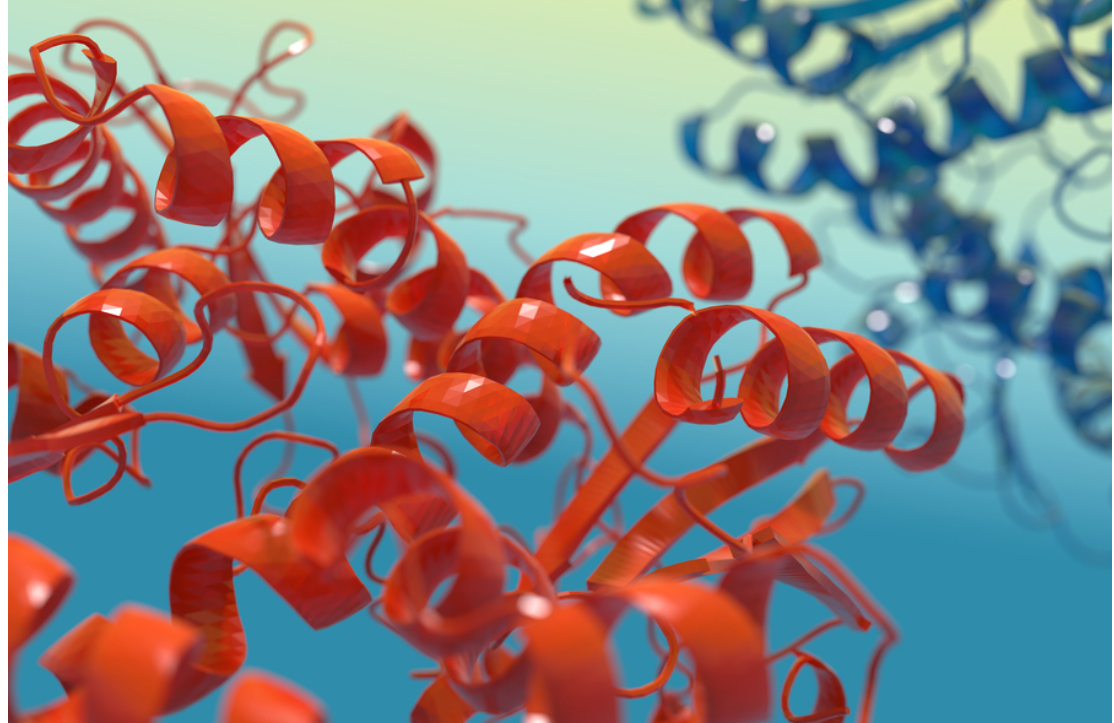MIT华裔科学家张曙光:蛋白质研究可能有助于研究人员开发新抗生素

【中美创新时报2024 年 6 月 10 日编译讯】(记者温友平编译)由麻省理工学院(MIT)媒体实验室首席研究员、美籍华裔科学家张曙光率领的美中研究人员创建了一种重要的细菌酶的水溶性版本,现在可用于药物筛选以识别新抗生素。对此,《麻省理工学院新闻》记者安妮·特拉夫顿(Anne Trafton)作了下述报道。
一种名为组氨酸激酶的细菌酶是新类抗生素的有希望的靶标。然而,开发针对这种酶的药物一直很困难,因为它是一种“疏水”蛋白质,一旦从细胞膜的正常位置移除就会失去其结构。
现在,麻省理工学院领导的一个团队找到了一种使酶水溶性的方法,这可以快速筛选可能干扰其功能的潜在药物。
研究人员通过将四种特定的疏水性氨基酸替换为三种亲水性氨基酸,创建了新版本的组氨酸激酶。即使在这一重大转变之后,他们发现水溶性酶仍保留了其天然功能。
目前还没有抗生素靶向组氨酸激酶,因此破坏这些功能的药物可能代表一类新的抗生素。迫切需要这样的候选药物来对抗日益严重的抗生素耐药性问题。

“每年有超过 100 万人死于抗生素耐药性感染,”麻省理工学院媒体实验室首席研究员、新研究的资深作者之一张曙光说。“这种蛋白质是一个很好的靶点,因为它是细菌所特有的,而人类没有。”
上海交通大学的两位教授徐平(Ping Xu)和陶飞(Fei Tao)也是这篇论文的资深作者,该论文今天发表在《自然通讯(Nature Communications)》上。上海交通大学的研究生、麻省理工学院前访问学生李梦科(Mengke Li)是这篇论文的主要作者。
新的药物靶点
许多发挥关键细胞功能的蛋白质都嵌入在细胞膜中。这些蛋白质跨越膜的片段是疏水性的,这使得它们能够与构成膜的脂质结合。然而,一旦从膜上移除,这些蛋白质就会失去结构,这使得研究它们或筛选可能干扰它们的药物变得困难。
2018 年,张曙光和他的同事设计了一种简单的方法,将这些蛋白质转化为水溶性版本,这些版本在水中保持其结构。他们的技术被称为 QTY 代码,代表融入蛋白质的亲水性氨基酸的字母。亮氨酸 (L) 变成谷氨酰胺 (Q),异亮氨酸 (I) 和缬氨酸 (V) 变成苏氨酸 (T),苯丙氨酸 (F) 变成酪氨酸 (Y)。
从那时起,研究人员已经在各种疏水性蛋白质上展示了这种技术,包括抗体、细胞因子受体和转运蛋白。这些转运蛋白包括癌细胞用来将化疗药物泵出细胞的蛋白质,以及脑细胞用来将多巴胺和血清素移入或移出细胞的转运蛋白。
在这项新研究中,研究小组首次证明 QTY 代码可用于创建保留其酶功能的水溶性酶。
研究小组选择专注于组氨酸激酶,部分原因是它具有作为抗生素靶标的潜力。目前,大多数抗生素通过破坏细菌细胞壁或干扰核糖体(制造蛋白质的细胞器)的合成起作用。它们都没有针对组氨酸激酶,这是一种重要的细菌蛋白,可调节抗生素耐药性和细胞间通讯等过程。
组氨酸激酶可以发挥四种不同的功能,包括磷酸化(通过向其他蛋白质中添加磷酸基来激活它们)和去磷酸化(去除磷酸盐)。人类细胞也有激酶,但它们作用于组氨酸以外的氨基酸,因此阻断组氨酸激酶的药物可能不会对人类细胞产生任何影响。
在使用 QTY 代码将组氨酸激酶转化为水溶性形式后,研究人员测试了其所有四种功能,发现该蛋白质仍然能够发挥这些功能。这意味着这种蛋白质可用于高通量筛选,以快速测试潜在的药物化合物是否会干扰其中任何一种功能。
稳定的结构
研究人员使用可以预测蛋白质结构的人工智能程序 AlphaFold 为他们的新蛋白质生成了一个结构,并使用分子动力学模拟来研究它如何与水相互作用。他们发现该蛋白质与水形成稳定的氢键,这有助于它保持其结构。
他们还发现,如果只替换跨膜片段中埋藏的疏水性氨基酸,蛋白质将无法保持其功能。整个跨膜片段的疏水性氨基酸都必须替换,这有助于分子保持正常运作所需的结构关系。
张曙光现在计划在甲烷单加氧酶上尝试这种方法,甲烷单加氧酶是一种存在于细菌中的酶,可以将甲烷转化为甲醇。这种酶的水溶性版本可以喷洒在甲烷释放的场所,例如牛居住的谷仓或融化的永久冻土,有助于从大气中去除大量甲烷,这是一种温室气体。
“如果我们可以在甲烷单加氧酶上使用相同的工具,即 QTY 代码,并使用该酶将甲烷转化为甲醇,那么就可以减缓气候变化,”张曙光说。
加州大学旧金山分校药物化学教授威廉·德格拉多 (William DeGrado) 表示,QTY 技术还可以帮助科学家更多地了解信号是如何通过跨膜蛋白传递的,他并未参与这项研究。
“能够制造出功能相关的水溶性蛋白质是一项巨大的进步,”德格拉多说。“一个重要的问题是信号是如何跨膜传递的,这项工作为解决这个问题提供了一种新方法。”
这项研究的部分资金来自中国国家自然科学基金。
题图:麻省理工学院领导的一个小组发现一种使细菌酶组氨酸激酶水溶性的方法,这可以使快速筛选可能干扰其功能的潜在抗生素成为可能。(图源:iStock)
附原英文报道:
Protein study could help researchers develop new antibiotics
Researchers created a water-soluble version of an important bacterial enzyme, which can now be used in drug screens to identify new antibiotics.
Anne Trafton | MIT News
Publication Date:June 10, 2024
A bacterial enzyme called histidine kinase is a promising target for new classes of antibiotics. However, it has been difficult to develop drugs that target this enzyme, because it is a “hydrophobic” protein that loses its structure once removed from its normal location in the cell membrane.
Now, an MIT-led team has found a way to make the enzyme water-soluble, which could make it possible to rapidly screen potential drugs that might interfere with its functions.
The researchers created their new version of histidine kinase by replacing four specific hydrophobic amino acids with three hydrophilic ones. Even after this significant shift, they found that the water-soluble version of the enzyme retained its natural functions.
No existing antibiotics target histidine kinase, so drugs that disrupt these functions could represent a new class of antibiotics. Such drug candidates are badly needed to combat the growing problem of antibiotic resistance.
“Each year, more than 1 million people die from antibiotic-resistant infections,” says Shuguang Zhang, a principal research scientist in the MIT Media Lab and one of the senior authors of the new study. “This protein is a good target because it’s unique to bacteria and humans don’t have it.”
Ping Xu and Fei Tao, both professors at Shanghai Jiao Tong University, are also senior authors of the paper, which appears today in Nature Communications. Mengke Li, a graduate student at Shanghai Jiao Tong University and a former visiting student at MIT, is the lead author of the paper.
A new drug target
Many of the proteins that perform critical cell functions are embedded in the cell membrane. The segments of these proteins that span the membrane are hydrophobic, which allows them to associate with the lipids that make up the membrane. However, once removed from the membrane, these proteins tend to lose their structure, which makes it difficult to study them or to screen for drugs that might interfere with them.
In 2018, Zhang and his colleagues devised a simple way to convert these proteins into water-soluble versions, which maintain their structure in water. Their technique is known as the QTY code, for the letters that represent the hydrophilic amino acids that become incorporated into the proteins. Leucine (L) becomes glutamine (Q), isoleucine (I) and valine (V) become threonine (T), and phenylalanine (F) becomes tyrosine (Y).
Since then, the researchers have demonstrated this technique on a variety of hydrophobic proteins, including antibodies, cytokine receptors, and transporters. Those transporters include a protein that cancer cells use to pump chemotherapy drugs out of the cells, as well as transporters that brain cells use to move dopamine and serotonin into or out of cells.
In the new study, the team set out to demonstrate, for the first time, that the QTY code could be used to create water-soluble enzymes that retain their enzymatic function.
The research team chose to focus on histidine kinase in part because of its potential as an antibiotic target. Currently most antibiotics work by damaging bacterial cell walls or interfering with the synthesis of ribosomes, the cell organelles that manufacture proteins. None of them target histidine kinase, an important bacterial protein that regulates processes such as antibiotic resistance and cell-to-cell communication.
Histidine kinase can perform four different functions, including phosphorylation (activating other proteins by adding a phosphate group to them) and dephosphorylation (removing phosphates). Human cells also have kinases, but they act on amino acids other than histidine, so drugs that block histidine kinase would likely not have any effect on human cells.
After using the QTY code to convert histidine kinase to a water-soluble form, the researchers tested all four of its functions and found that the protein was still able to perform them. This means that this protein could be used in high-throughput screens to rapidly test whether potential drug compounds interfere with any of those functions.
A stable structure
Using AlphaFold, an artificial intelligence program that can predict protein structures, the researchers generated a structure for their new protein and used molecular dynamics simulations to investigate how it interacts with water. They found that the protein forms stabilizing hydrogen bonds with water, which help it keep its structure.
They also found that if they only replaced the buried hydrophobic amino acids in the transmembrane segment, the protein would not retain its function. The hydrophobic amino acids have to be replaced throughout the transmembrane segment, which helps the molecule maintain the structural relationships it needs to function normally.
Zhang now plans to try this approach on methane monooxygenase, an enzyme found in bacteria that can convert methane into methanol. A water-soluble version of this enzyme could be sprayed at sites of methane release, such as barns where cows live, or thawing permafrost, helping to remove a large chunk of methane, a greenhouse gas, from the atmosphere.
“If we can use the same tool, the QTY code, on methane monooxygenase, and use that enzyme to convert methane into methanol, that could deaccelerate climate change,” Zhang says.
The QTY technique could also help scientists learn more about how signals are carried by transmembrane proteins, says William DeGrado, a professor of pharmaceutical chemistry at the University of California at San Francisco, who was not involved in the study.
“It is a great advance to be able to make functionally relevant, water-solubilized proteins,” DeGrado says. “An important question is how signals are transmitted across membranes, and this work provides a new way to approach that question.”
The research was funded, in part, by the National Natural Science Foundation of China.

